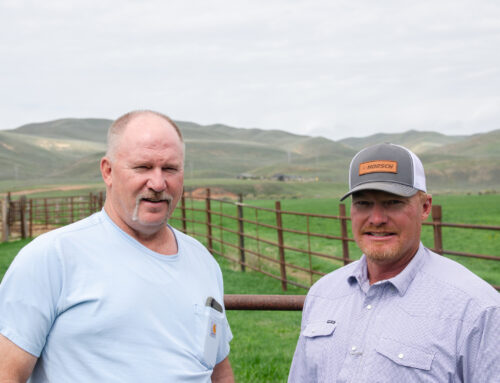At Upfronts And NewFronts 2025, Ad Industry Navigates Uncertainty
May 15, 2025
I say upfronts, you say NewFronts – let’s not call the whole thing off, OK? Whatever tumult continues to envelop the TV/streaming advertising industry, there is something comforting about the media swallows returning to Capistrano/Manhattan for the formal kick off to the now perpetual scramble for ad dollars in the media industry.
The historic shift of global political winds and our macroeconomic uncertainty are never far from anyone’s thoughts these days. Yet in the media ad business, there is still a clinging notion of optimism that “we’ll figure this out.” To paraphrase a conversation I had with David Cohen, President of the Interactive Advertising Bureau, the alternative to being optimistic is pretty bleak and doesn’t do much practical good for anyone, so why not cling to optimism?
And in the midst of the accelerating decline in the linear TV business among cable subscribers and ratings, some lingering uncertainty might even be a good thing for media sellers and buyers. If you’re a big brand, can you really afford to dramatically change things up right now? What if you cut back spending and your competitors don’t? What if despite all the Trump turmoil the economic winds actually die down? Being innovative is one thing, but radical moves? For once the linear TV business might benefit from some marketplace jitters.
What did the upfronts and NewFronts tell us about where we are in media advertising right now? Here’s a few somewhat random takeaways.
Everything that’s old – and not even that old – is new again
Warner Bros. Discovery announced that Max (nee HBO Max, adopted son of HBO Now) will once again be called HBO Max. It’s been quite a branding journey for WBD’s streaming efforts (remember CNN+? The streaming DC Universe?) but to the company’s credit they poked a bit of fun at themselves, finally (one hopes) re-embracing an iconic brand in entertainment. “It’s not TV, it’s HBO” once resonated meaningfully with audiences, and it still means a lot more than Max.
Speaking of WBD, the company’s content approach is heavily centered on its content library (“IP” for you marketing and legal eagles). WBD’s newly labeled branded content studio, Storyverse, sells its main value in a concept the company called “Newstalgia,” which sounds like a yearning for Walter Cronkite but is instead a means of linking brands with a host of well-known WBD brands and franchises from Looney Tunes to DC Comics.
Stars are a tried and true upfronts strategy, and stars of every stripe were all over the upfronts and in parts of the NewFronts as well. They were the center piece of every presentation, and Netflix and Amazon take a back seat to no one in the traditional media world, rolling out big guns such as Arnold Schwarzenegger, Jason Momoa, Charlize Theron, Jason Bateman and folks that played “both sides” of the Big Tech-media company divide such as Candace Parker, Elizabeth Banks, Octavia Spencer, and John Cena. Even David Letterman was a double attendee, promoting the new Letterman TV for Samsung TV Plus and his role as a racing car team owner for Fox, the new home of the Indy 500. Hey, all is fair in the scramble for love, attention, and ad dollars.
And how about that old canard, broadcast television? Don’t look now but Samsung is starting the Samsung Television Network, which curates a mix of entertainment, news, and sports content entirely ad-supported and broadcast live 24/7 on Samsung TV Plus. Hmm…sounds familiar, no? And take a look at Fox’s Tubi, its free a-supported on-demand and streaming service whose commercial load is noticeably creeping up (personal experience there) and beginning to resemble the linear TV world more than you’d think.
Have you heard we have sports?
Sports of all kinds are now the kings, queens, and even court jesters of the media world. Karen Kovacs, NBCU’s President of Advertising Sales & Partnerships, noted to me in advance of the upfronts the centrality of sports for the NBCU presentation. Jimmy Fallon, of some note as a late-night talk show host, greeted the NBCUniversal upfront crowd with “Welcome to the NBA – I mean NBC – upfront!” He wasn’t far off as NBC rolled out John Tesh to accompany a full symphony orchestra for Tesh’s fabled “Roundball Rock,” the NBA on NBC theme song of the 1990s which the network is bringing back. NBCU had a live opera singer (in Italian of course) accompany its orchestra over a montage on the upcoming winter Olympics in Milan Cortina. And a troupe of dancers celebrated the upcoming 2026 FIFA World Cup to be broadcast on Telemundo.
Disney announced its new ESPN stand-alone streaming flagship called ESPN (I guess Max was taken). And Jimmy Kimmel said, “there are more athletes [at the upfront] than there were at the Knicks game last night.” Fox leaned heavily and unsurprisingly on NFL legends Tom Brady and Rob Gronkowski. And WBD, soon to be without the NBA, highlighted a range of somewhat less shiny sports programming from Roland Garros tennis to Big 12 and Big East college basketball. Beyond the games themselves, plenty of companies pitched their sports-adjacent or sports-related programming from the football-themed sitcom Chad Powers starring Glen Powell on Disney+ to the women’s sports talk Vibe Check on ESPN.
“DEI” is under fire but not the need to reach diverse audiences
There may be a ton of controversy in the political environment around diversity policies, but for brands and publishers in constant search of audience scale there can’t be any pullback in serving the increasingly diverse U.S. population. As more than one company noted in the last two weeks, the Latino population alone has accounted for 30% of the growth in the U.S. economy since 2019. Televisa Univision and NBCU’s Telemundo are the 800-pound gorillas in serving that audience segment and Telemundo was prominently promoted at NBCU’s upfront, although SNL’s Marcello Hernandez did poke some fun at the overwhelmingly white audience noting that the “energy in here is insane.”
Beyond the established incumbents, a number of other companies pitched their value proposition to advertisers over the last two weeks. Canela Media is an entirely digital platform whose “Futbol sites” (featuring soccer chatter) garner more social media users that those from Telemundo or Univision. LatiNation is another company seeking a place in the multicultural conversation. MediaCo is a new publicly traded company branching out beyond its Latino Estrella TV with its Hot97 property, the biggest name in HipHop radio. That brand is heading to the FAST channel world as well. RevryTV has solidified its place as a unique streaming destination for the LGBTQ+ community. Sheila Marmon, founder of a multiculturally-focused agency named Mirror Digital, noted that her company has been been at it for twelve years, pitching its value proposition of community-centered “authentic storytelling.”
News has a seat at the table, but has to be a part of broader conversations
It is harder than ever to be in the news business, with the algorithmic-driven fragmentation of audiences clinging to ever-narrower views of the world through their social media. The New York Times held its first NewFronts event in six years and highlighted the breadth of its “lifestyle” brands in games, cooking, consumer products (the Wirecutter), and sports (The Athletic) as critical to supporting its core journalistic mission. As Tusar Barik, The Times’s new SVP for Advertising Marketing told me, the Times provides advertisers “a platform that connects all different parts of your life.” The company revels being “at the center of culture” such as in SNL’s recent sketch with Trump signing an executive order to make playing the Times’s “Connections” easier. Of course, for Good Morning America and The Today Show, produced by ABC News and NBC News respectively, it’s hardly a revelation that advertisers love “news” segments on cooking, travel, healthcare, parenting, and a panoply of lifestyle tips. Hey, if this stuff helps advertisers and helps support the mission of “real” news, I’m in.
Search
RECENT PRESS RELEASES
Related Post



